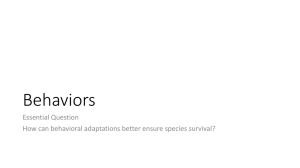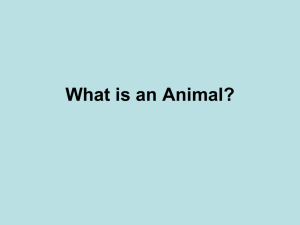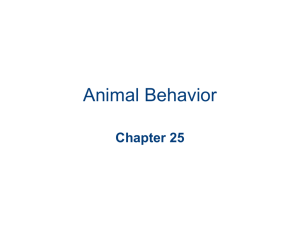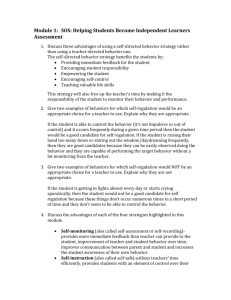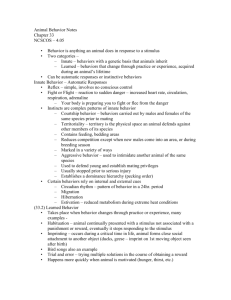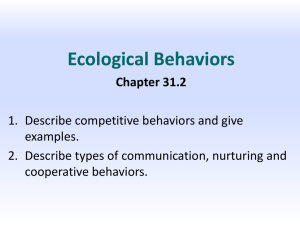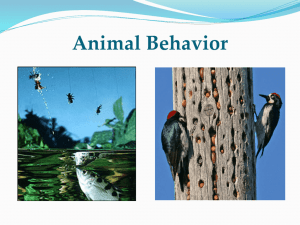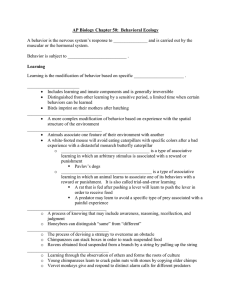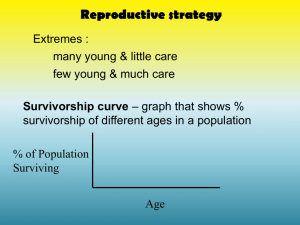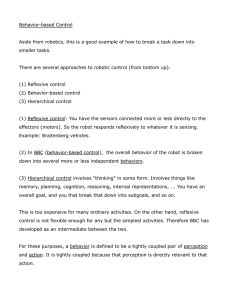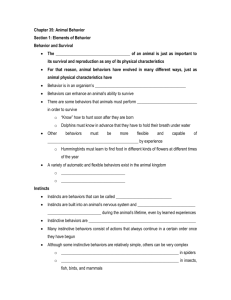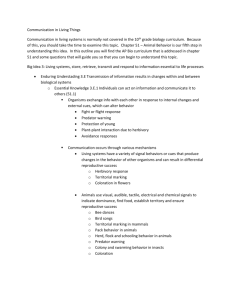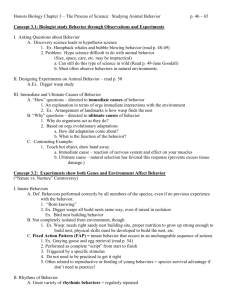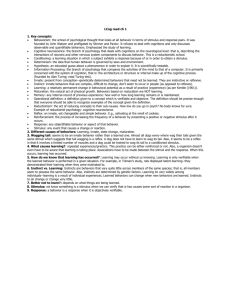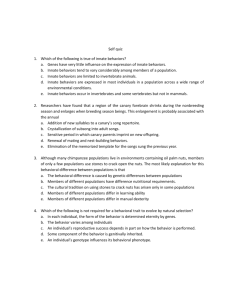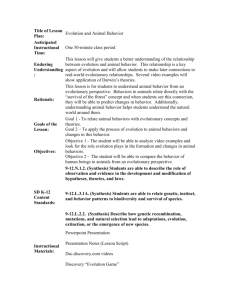Behavior Ecology Study Guide
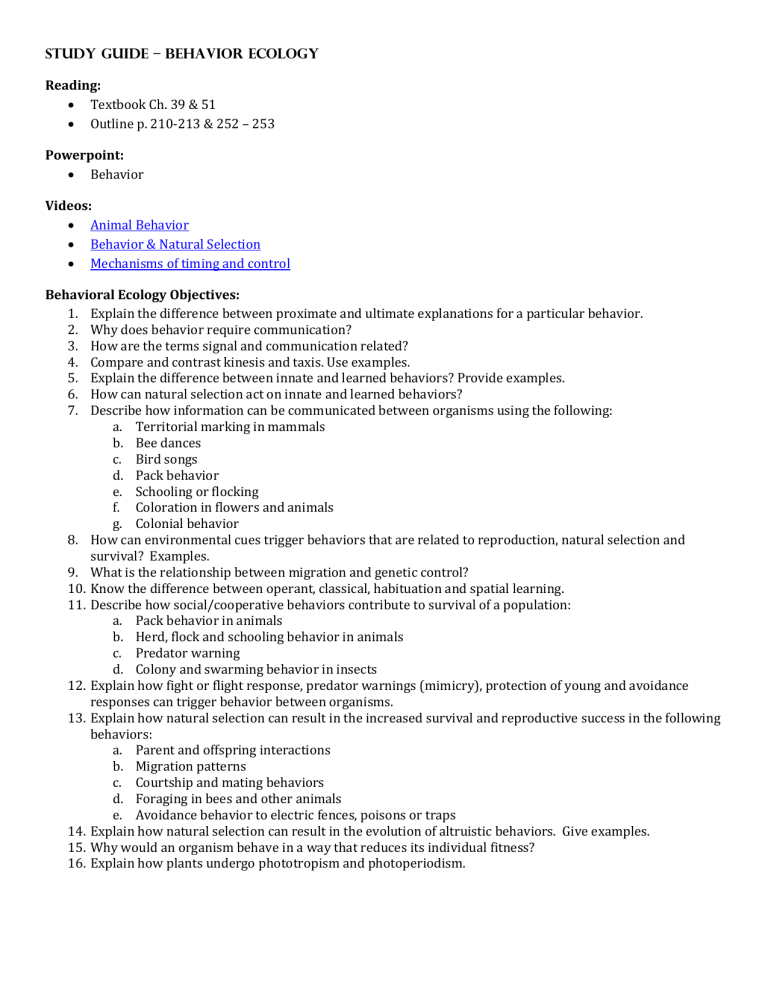
Study Guide – Behavior Ecology
Reading:
Textbook Ch. 39 & 51
Outline p. 210-213 & 252 – 253
Powerpoint:
Behavior
Videos:
Animal Behavior
Behavior & Natural Selection
Mechanisms of timing and control
Behavioral Ecology Objectives:
1.
Explain the difference between proximate and ultimate explanations for a particular behavior.
2.
Why does behavior require communication?
3.
How are the terms signal and communication related?
4.
Compare and contrast kinesis and taxis. Use examples.
5.
Explain the difference between innate and learned behaviors? Provide examples.
6.
How can natural selection act on innate and learned behaviors?
7.
Describe how information can be communicated between organisms using the following: a.
Territorial marking in mammals b.
Bee dances c.
Bird songs d.
Pack behavior e.
Schooling or flocking f.
Coloration in flowers and animals g.
Colonial behavior
8.
How can environmental cues trigger behaviors that are related to reproduction, natural selection and survival? Examples.
9.
What is the relationship between migration and genetic control?
10.
Know the difference between operant, classical, habituation and spatial learning.
11.
Describe how social/cooperative behaviors contribute to survival of a population: a.
Pack behavior in animals b.
Herd, flock and schooling behavior in animals c.
Predator warning d.
Colony and swarming behavior in insects
12.
Explain how fight or flight response, predator warnings (mimicry), protection of young and avoidance responses can trigger behavior between organisms.
13.
Explain how natural selection can result in the increased survival and reproductive success in the following behaviors: a.
Parent and offspring interactions b.
Migration patterns c.
Courtship and mating behaviors d.
Foraging in bees and other animals e.
Avoidance behavior to electric fences, poisons or traps
14.
Explain how natural selection can result in the evolution of altruistic behaviors. Give examples.
15.
Why would an organism behave in a way that reduces its individual fitness?
16.
Explain how plants undergo phototropism and photoperiodism.
